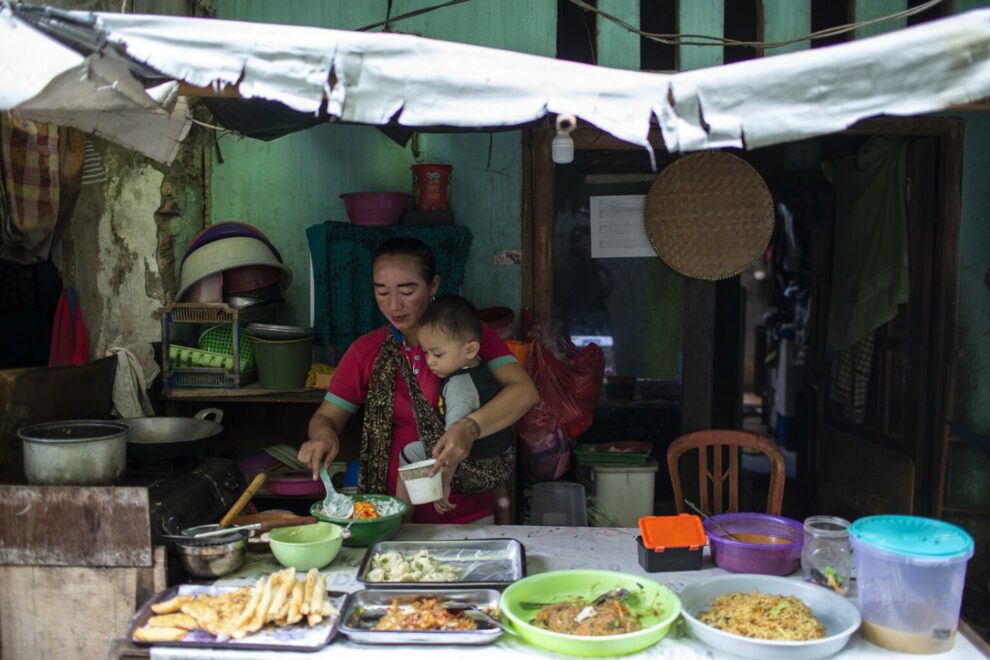Amidst the polycrisis of conflicts, COVID-19 and climate change among others, our food systems are under threat. Hunger is on the rise. The FAO estimates that in 2022, approximately 400 million people in Asia and the Pacific are undernourished, representing just over half of the global hunger population; women are more food insecure than men, and rural areas more affected than cities. According to WFP, annual food price inflation reached as high as 64 per cent in Sri Lanka, 36 per cent in Pakistan, and 18 per cent in Myanmar in December 2022. Today, over 40 per cent of people are unable to afford a healthy diet in Asia.
The dynamics in the climate-food-energy-water nexus have significant implications in the region. Disasters – including extreme events such as droughts and floods – take a heavy toll on food systems. At the same time, agrifood systems themselves are important drivers of climate and environmental change, with increasing emissions from intensive energy use in crop and livestock production, manufacturing of fertilizers, as well as food transport and trade.
Resilient, healthy, equitable and sustainable food systems can only be effectively built with strategies that respond to the risk profile of each location.
ESCAP and the WFP Regional Bureau for Asia and the Pacific are launching the INsights on Food SystEm Risks (INFER) Framework, a data-driven approach for assessing multidimensional risks to food systems.
INFER integrates up-to-date understanding of food systems with well-established concepts of risk based on three dimensions: hazard and exposure, vulnerability, and lack of adaptive capacity. It helps to narrow the science-policy gap by providing insights on multidimensional risks beyond food insecurity, responding to extreme climate events, supply disruptions, and socio-political turmoil among others. Specifically, INFER tells us which food system outcomes are at risk, allowing monitoring of food systems in relation to human health and nutrition (people), ecosystem health and sustainability (planet), and shared prosperity (prosperity) in alignment with the 2030 Agenda for Sustainable Development. It does so by providing insights on food system risk trends, characteristics, and drivers, serving as a useful tool for policymakers, development partners, researchers or anyone working with food systems transformation and food security (see figure 1).
We applied the INFER Framework to 49 countries across the Asia-Pacific region, integrating 95 indicators from publicly-available data sources. The results show that most Asia-Pacific countries have experienced an increase in multidimensional risk in food systems in the last five years. Some countries face particularly high and increasing risks in food systems (e.g. Afghanistan, Islamic Republic of Iran and Pakistan). Some countries, while facing relatively low risk compared to the Asian-Pacific average, are also seeing risk increases compared to five years ago (e.g. Australia, New Zealand and Republic of Korea) (see figure 2).
Across the region as a whole, food system vulnerability has continued to increase since the 2007-2008 food-energy price crisis. While there had been progress in Asia and the Pacific’s adaptive capacity and reduced exposure to hazard, COVID-19 has reversed the trends, increasingly painting the picture of a “perfect storm” where risks increase across all three risk dimensions (figure 3.a).
Food security dimensions such as food availability as well as healthy and safe utilization of food have seen improvements. However, there is a considerable increase in risks related to stability and slow, and marginal improvement in sustainability (figure 3.b). This highlights the rising importance of risks beyond producing enough food, as well as the criticality of reducing risks of slow onset events related to climate change as well as vulnerabilities among the households and individuals most likely to be impacted by shocks.
Figure 3: Food system risk trends in Asia and the Pacific by (a) risk dimension and (b) food security dimension
Explore the new INFER Dashboard
The new ESCAP-WFP INFER Dashboard offers a more interactive and in-depth look at the INFER framework and its insights by country or subregion. Users are able to choose a country or subregion of interest, to look into different food system risk trends, hotspots and drivers. It is also possible to compare countries and subregions, and see changes in risk across time.
Source : UNESCAP















